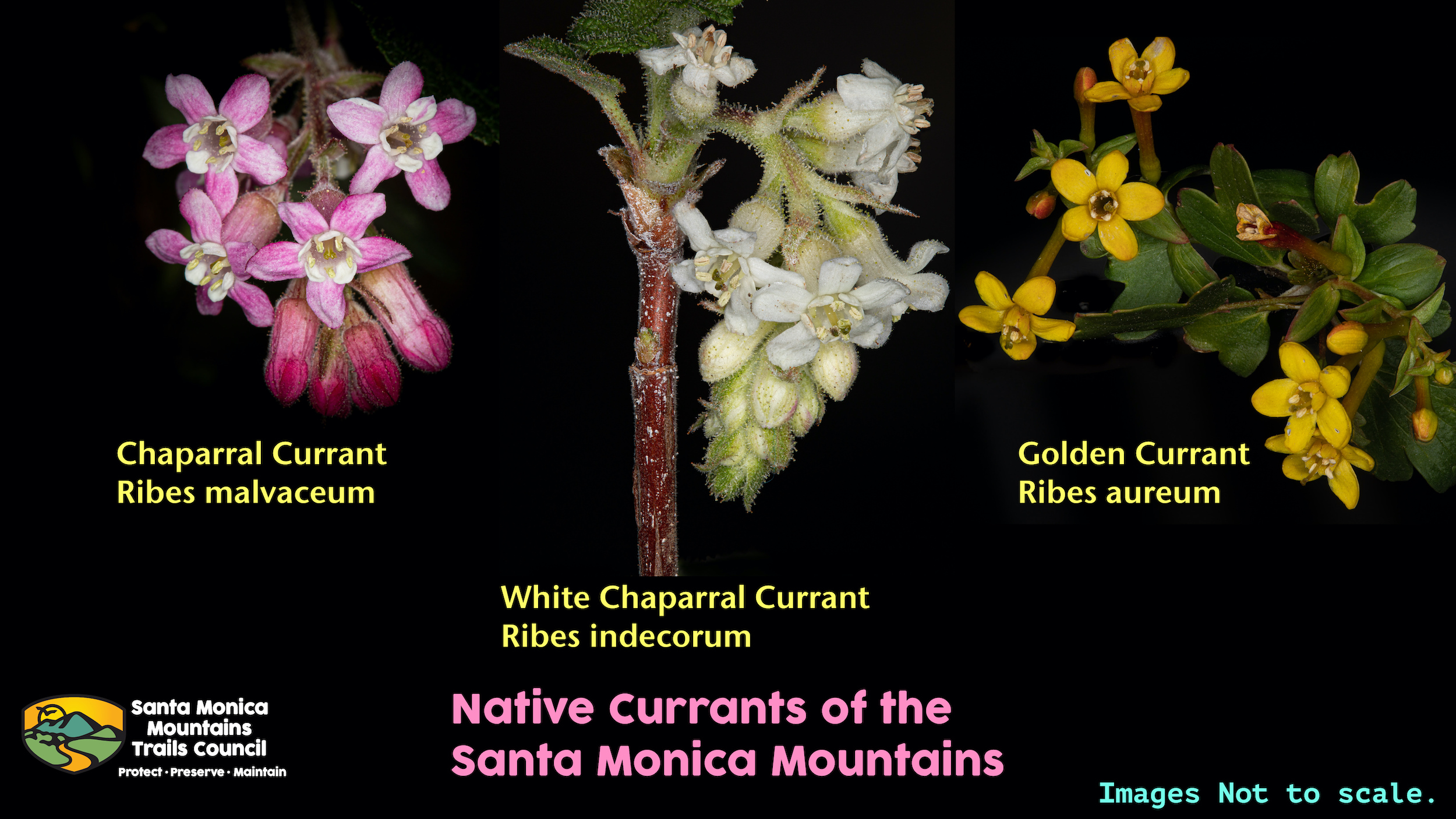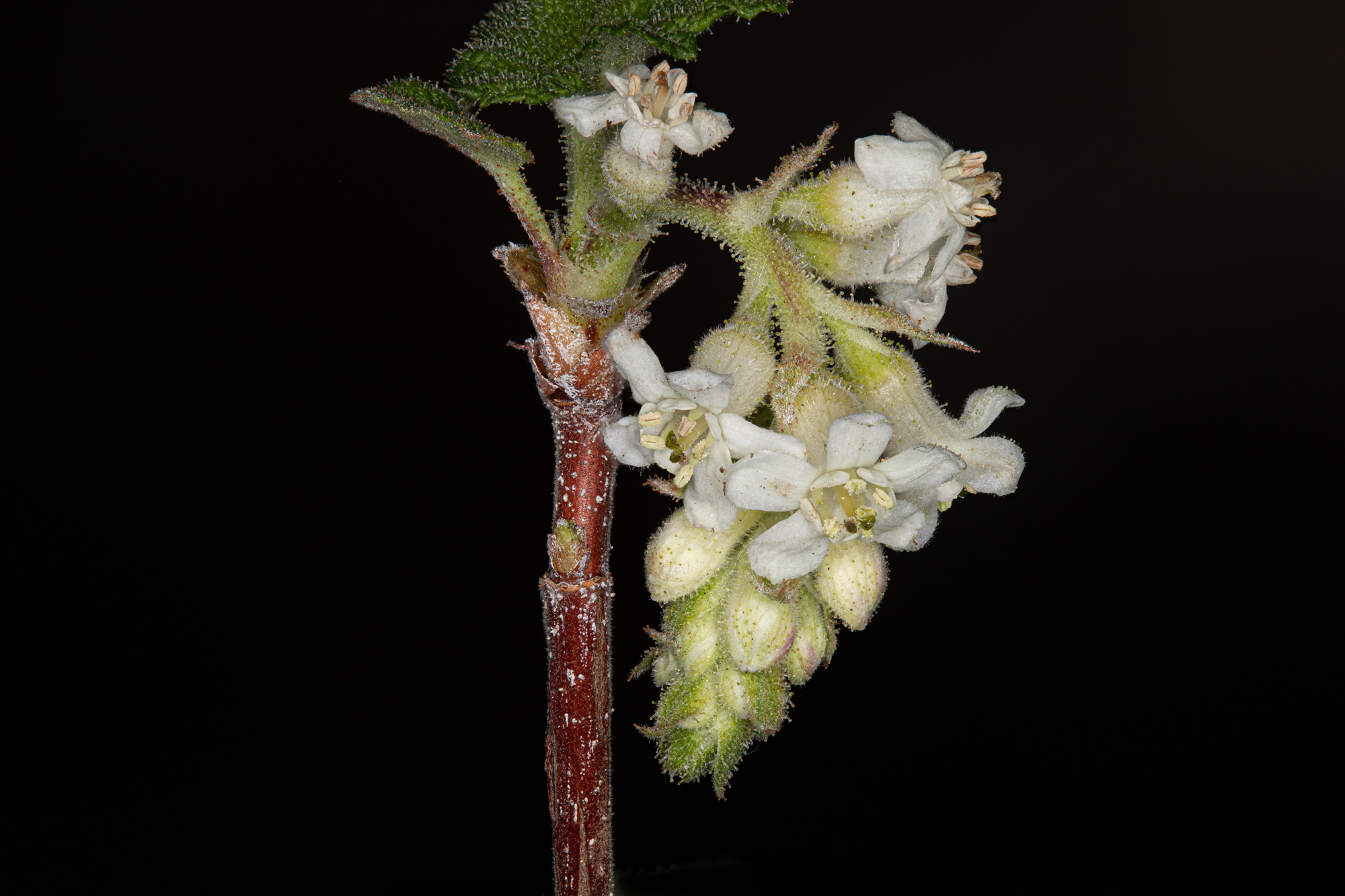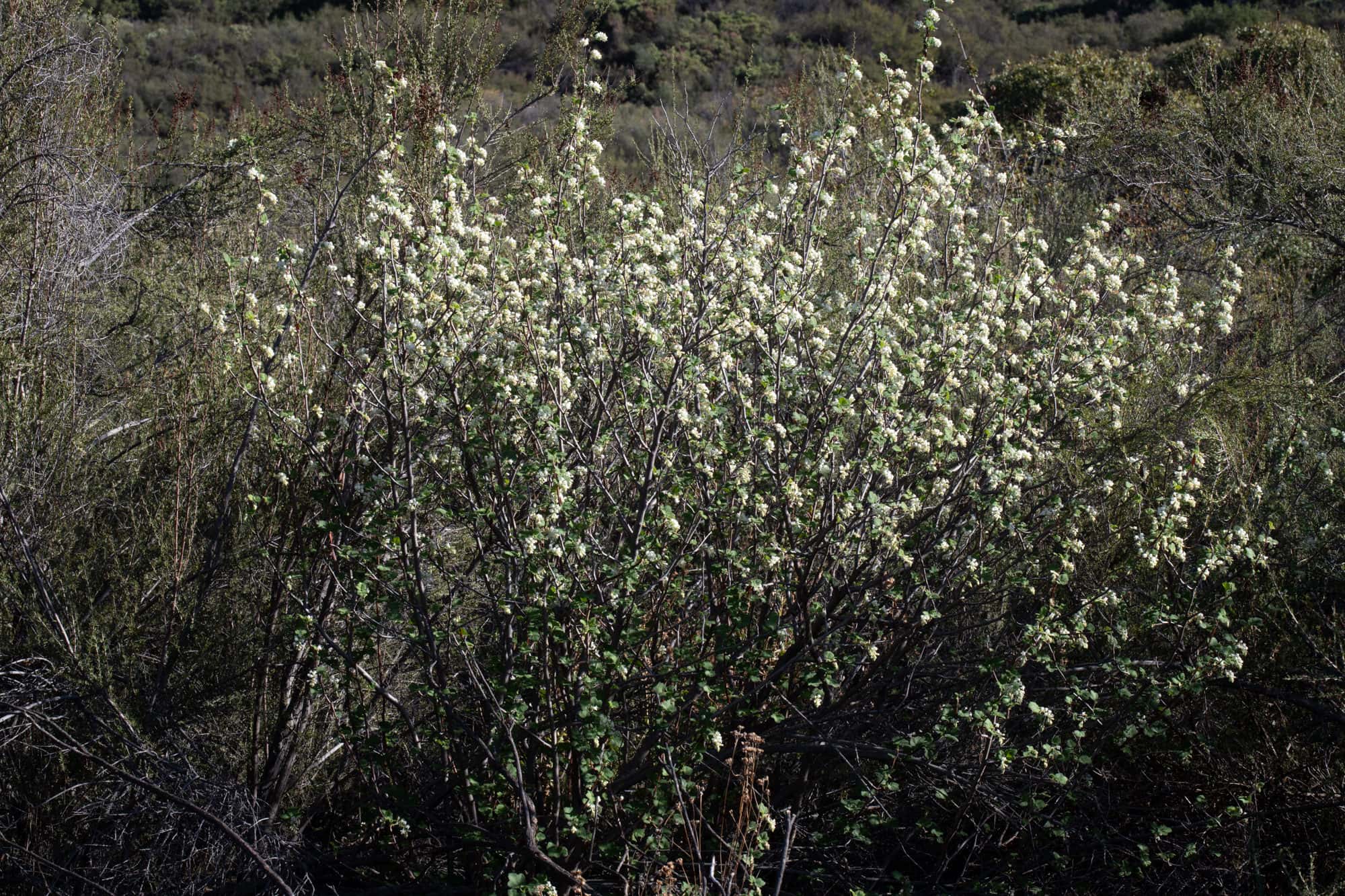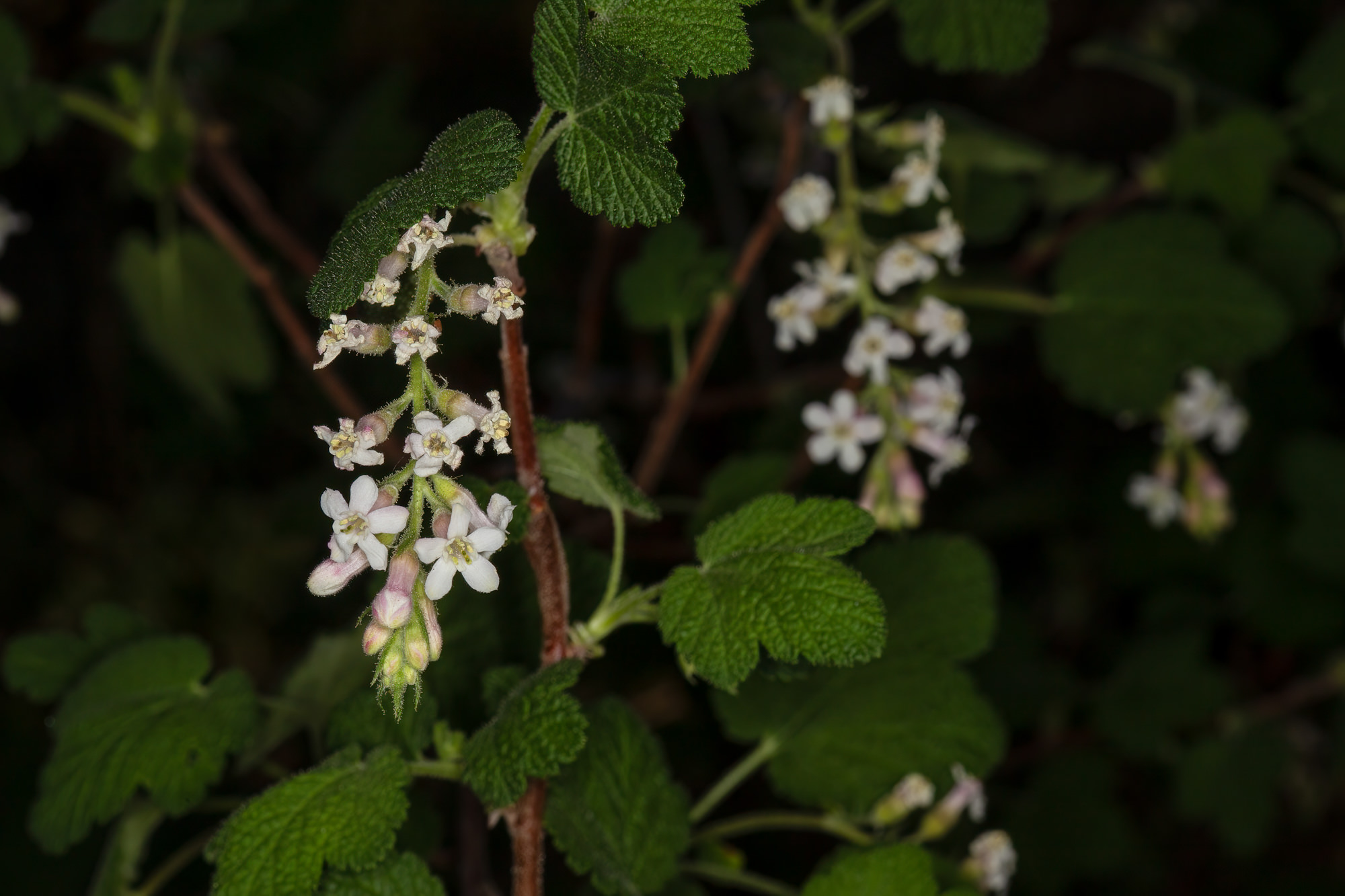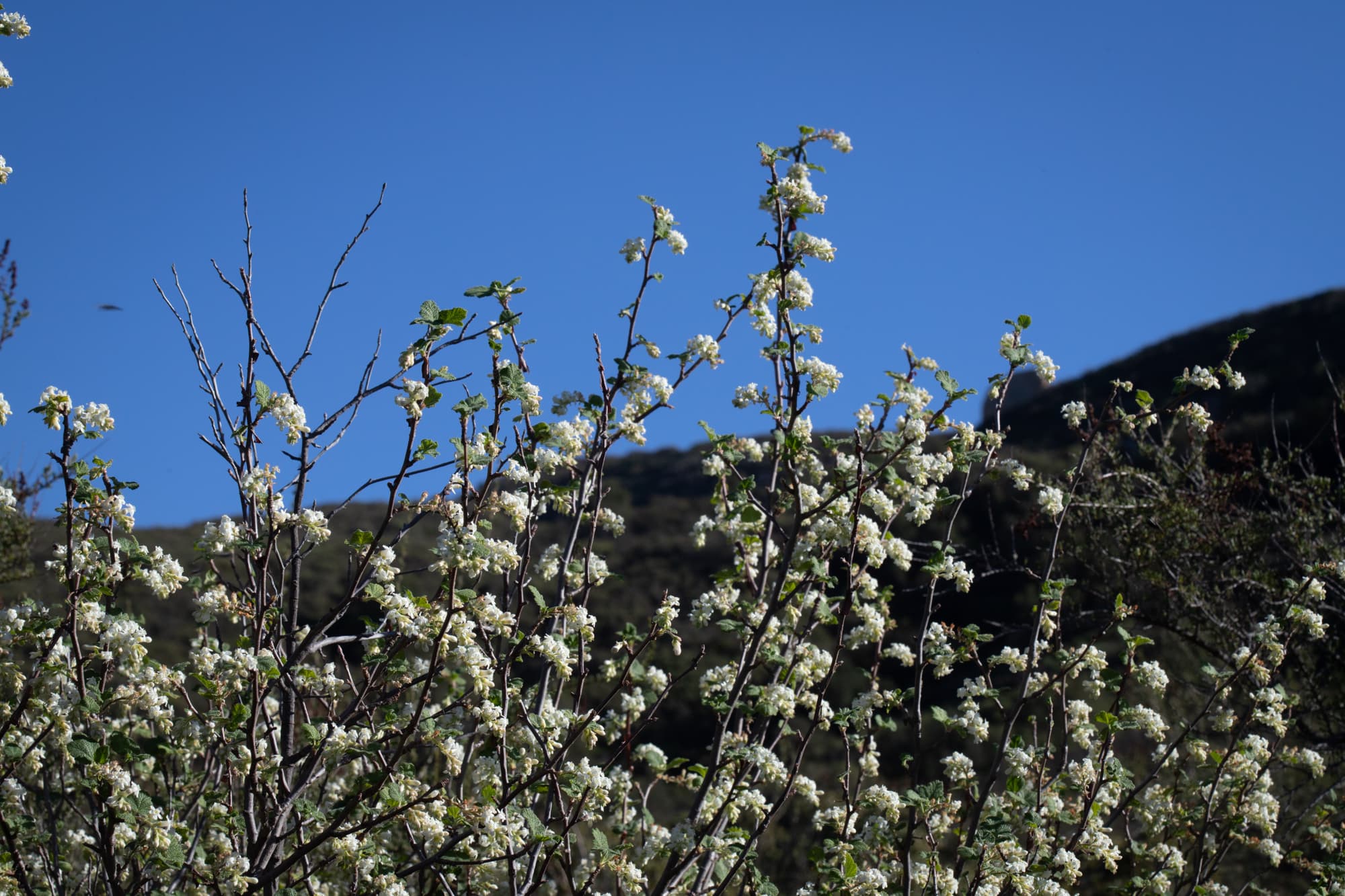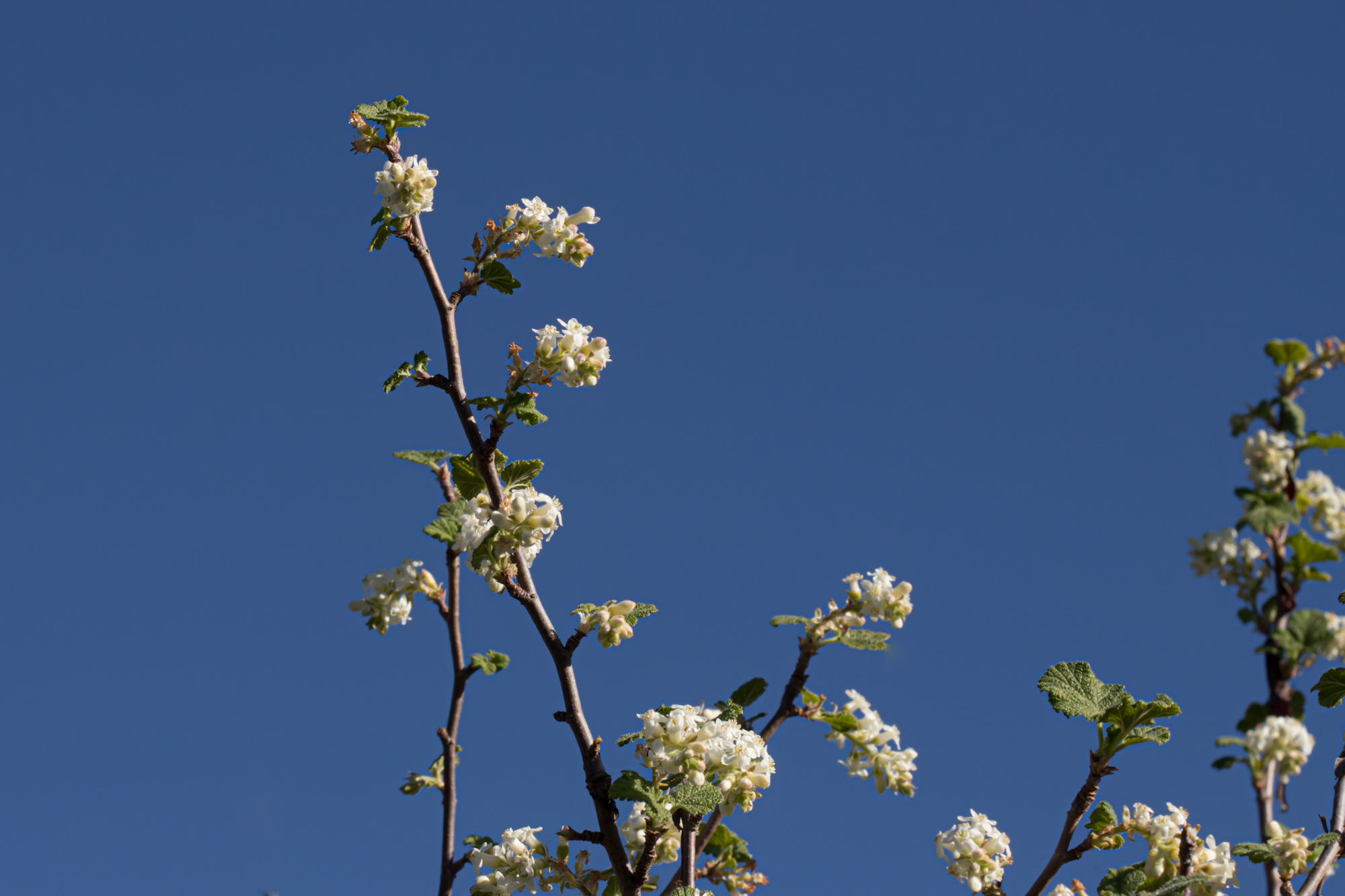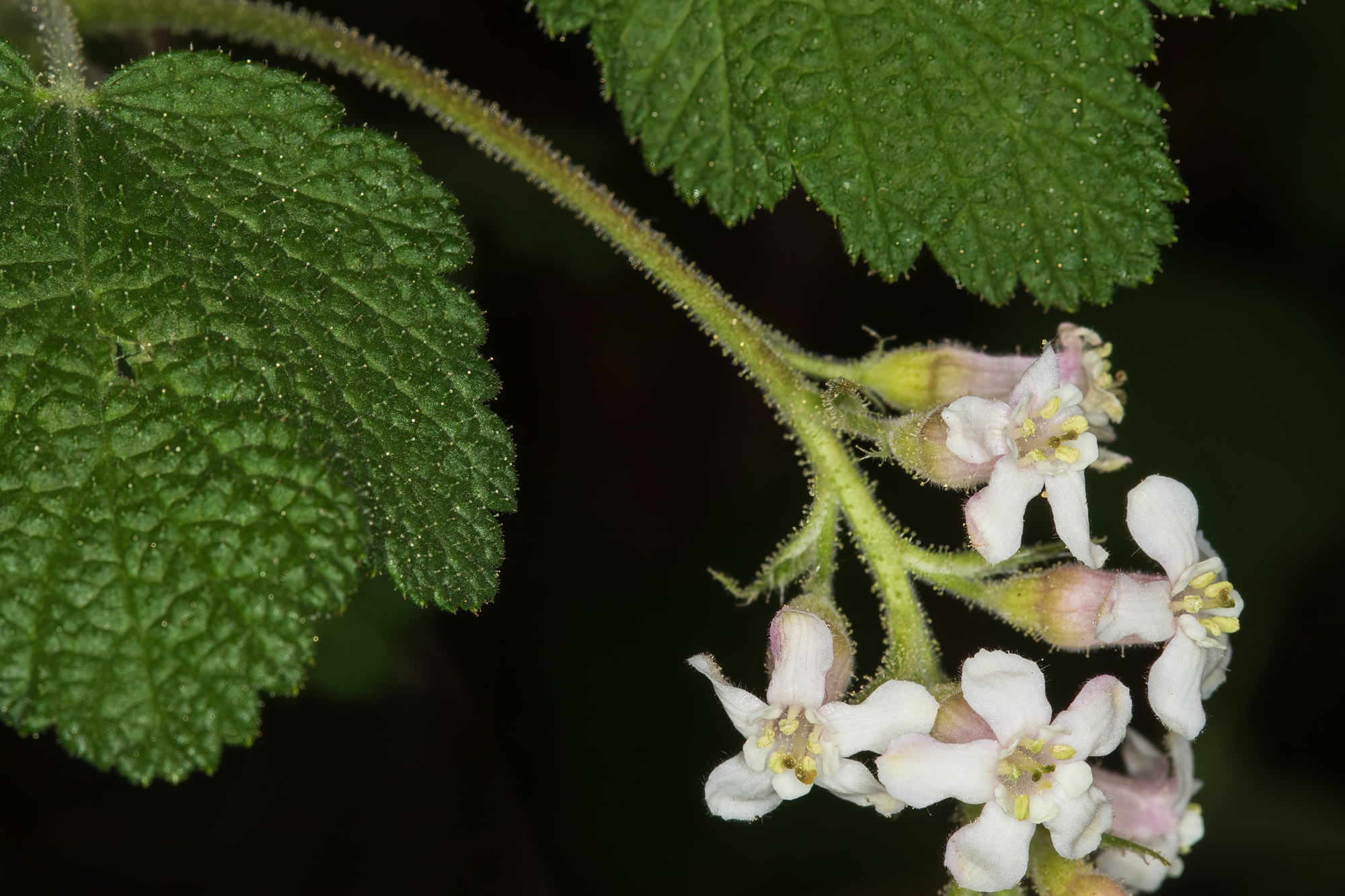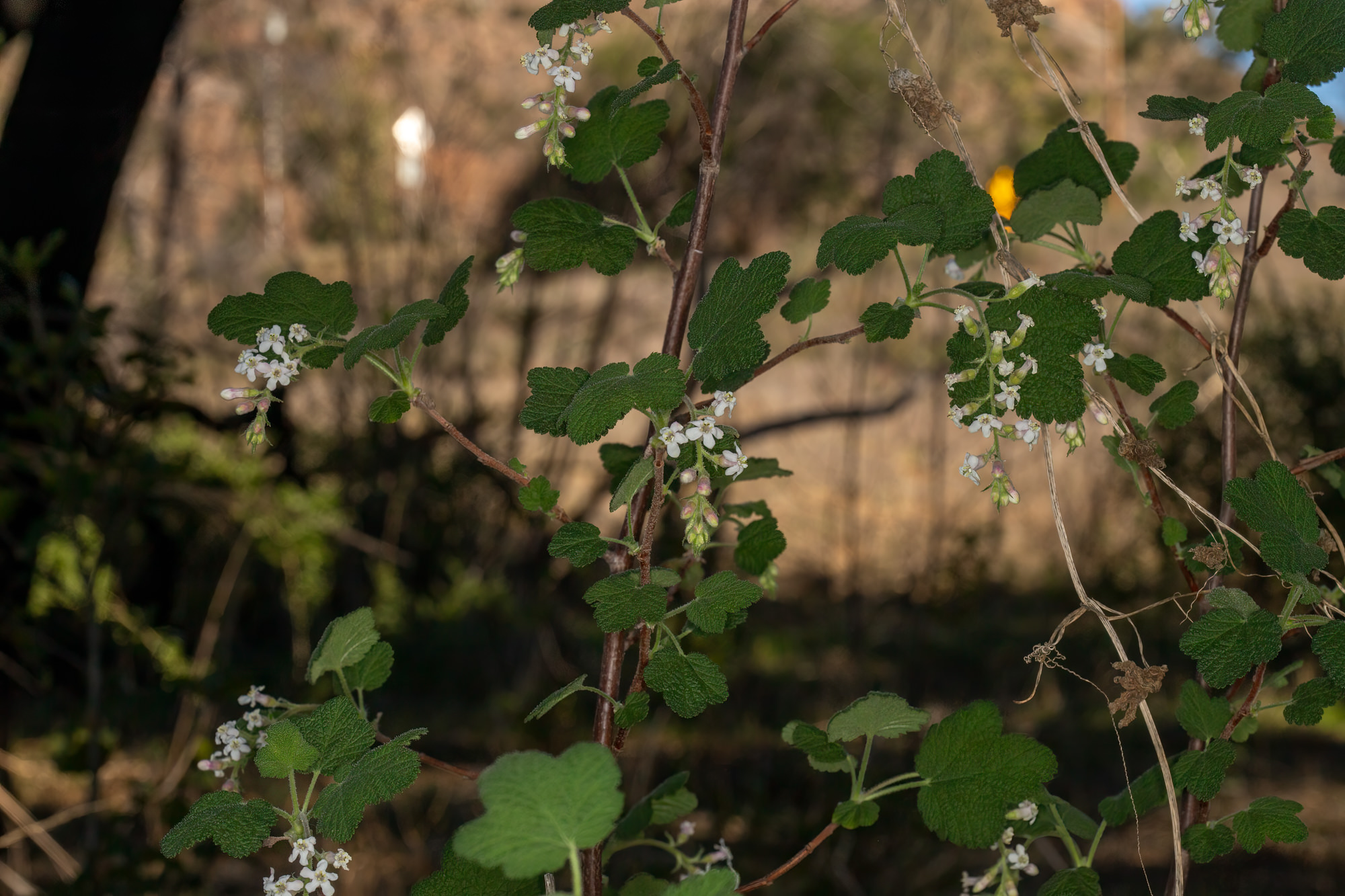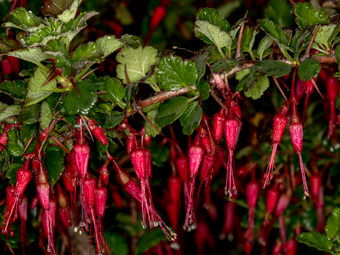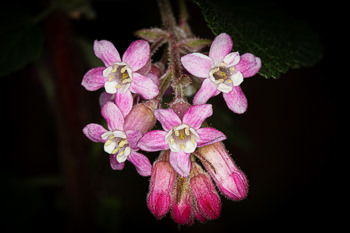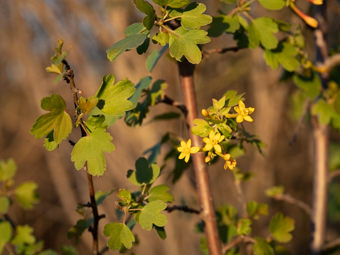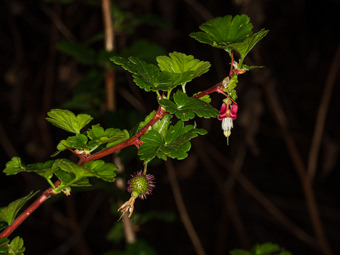White Chaparral Currant
- Ribes indecorum
| Common Name(s): | White Chaparral Currant |
| Scientific Name: | Ribes indecorum |
| Family: | Grossulariaceae (Gooseberry) |
| Plant Type: | Perennial |
| Size: | up to 10 feet |
| Habitat: | coastal scrub and chaparral |
| Blooms: | November to February |
| Fire Response: | Stump Sprout or Seed |
Ribes indecorum,commonly called white chaparral currant, has similar characteristics (flowers,leaves, fruit) to chaparral currant. The obvious visual difference is the color of the flowers - white versus pink. White chaparral currant is also less common in in the Santa Monica Mountains. The plant produces hundreds of blooms during its short blooming season (December to February). Found throughout the southern part of California and down into the northern part of Mexico, it commonly grows along stream banks and other moist/seasonally moist places below 2000 ft (600 meters) elevation. These blooms attract hummingbirds and Monarch butterflies.
The genus Ribes contains more than 140 species of shrubs; 5 of which are found in the Santa Monica Mountains. The genus is further categorized:
Gooseberries: spiny stems are a diagnostic trait
Currants: lack of spines or bristles on the stems.
Ribes indecorum white chaparral currant (Ribes indecorum) is a non-spiny shrub with stems 4-9 feet tall and mostly three-lobed, maple-like leaves. The leaves are helically alternate - visualize a spiral staircase. The leaves are wrinkled and thicker compared to Ribes aureum var. gracillimum. This plant grows and expands by sprouting from rhizomes (underground stems).
The flowers are produced in clusters (recemes) of 5 to 15 flowers. Botanists use the term hypanthium to describe the five sepals that form the corolla-like tube that contain the reproductive parts of the flower - the base is narrower than the lip. There are five petals in the center of the bloom. Five stamens (alternating petal, stamen,petal ) and one pistil (look closely at image 9 and you can see the two stigmas at the end of the pistil.
Native peoples consumed the berries and pulverized the bark to make a concoction to treat wounds.
Link to Calflora.net - the best source of this fascinating information
Ribes – from the Syrian or Kurdish ribas, meaning acid-tasting, which was derived from an old Persian word.
indecorum – unattractive, without decoration.
Contributed by George Sherman
Featured Plants in the Grossulariaceae (Gooseberry) Family:
Last modified: May 01 2025 14:29:06.
Number of Images: 9
Image Size Total: 4,785,782
References:
Wildflowers of the Santa Monica Mountains, by Milt McAuleyFlowering Plants: The Santa Monica Mountains, Coastal and Chaparral Regions of Southern California, by Nancy Dale
Chumash Ethnobotany: Plant Knowledge Among the Chumash People, by Jan Timbrook
Leaf Shapes Primer - Botanical Terms for Leaves: - Link
